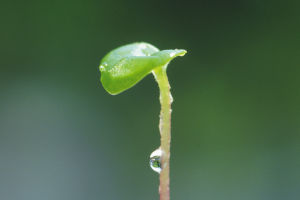Dahlia is a highly ornamental flower, renowned for its diverse colors and shapes.
It originated in Mexico and Central America.
As early as 500 BC, the Mayan civilization began to cultivate and appreciate this beautiful plant. Over time, dahlias gradually spread to Europe, where they became a popular flower in the 18th century, attracting the attention of many botanists and gardeners.
There are many varieties of dahlias, with hundreds of different types around the world, primarily classified according to the shape and arrangement of the petals. Among them, the most common forms include spherical, single-petal, flower balls, and large pompoms.
These different shapes contribute to a rich sense of layering in the garden. The flower colors are even more varied, ranging from bright red and yellow to soft pink and white.
Each color conveys different emotions and atmospheres, making dahlias a favorite among gardening enthusiasts and flower designers. They are widely used in flower beds, as cut flowers, and in floral arrangements.
The cultivation of dahlias is relatively simple, but their requirements for the growing environment cannot be overlooked. They thrive in plenty of sunlight and well-drained soil, which are essential for their growth. Before planting, selecting healthy bulbs and ensuring the soil's fertility are keys to success.
Dahlias are typically planted in the spring, gradually growing with the warm weather and blooming in the summer. Regular watering and fertilizing can promote healthy growth and enhance the quality of the blooms.
In addition to their beautiful appearance, dahlias hold cultural significance. In Mexico, dahlias are not only the national flower but also an important symbol of festivals and anniversaries. Every year on the Day of the Dead, many families decorate altars with dahlias to commemorate their deceased relatives.
Their shape and color symbolize the cycle of life and carry deep meanings about life and death. In this tradition, dahlias serve not only as decoration but also as emotional sustenance.
As gardening continues to evolve, the breeding technology of dahlias has also advanced significantly. Modern gardeners have created many novel varieties through hybrid breeding, resulting in blooms that are richer in color and more diverse in size and shape. This innovation has kept dahlias relevant in contemporary gardening, attracting a new generation of enthusiasts.
Dahlias have become beloved flowers due to their rich varieties, charming colors, and profound cultural background. Whether in the flower beds of parks or the gardens of homes, they uniquely enhance our lives. Dahlias are not only a treasure of nature but also represent humanity's pursuit of beauty and love for life.


